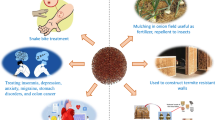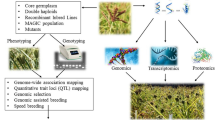Abstract
Turkey is a rich source of European hazelnut (Corylus avellana) germplasm with nearly 400 accessions in the national collection. This genetic material encompasses cultivars, landraces and wild genotypes which were characterized for 12 nut and 13 kernel traits over 2 years in the 1990s. Analysis of these attributes revealed both the positive and negative impacts that human selection and breeding have had on hazelnut. Thus, while selection has resulted in larger nuts and kernels, cultivars have fewer nuts per cluster and kernels with larger internal cavities. Breeding has also resulted in a propensity for cultivars to have higher proportions of double kernels and empty nuts, two traits which reduce quality and yield. In addition, it is clear that while selection has successfully increased hazelnut fat content it has not impacted overall flavor, a much more complex trait. The nut and kernel phenotypic data were combined with genotypic data from 406 simple sequence repeat marker alleles for association mapping of the quantitative trait loci (QTL) for the traits. A total of 78 loci were detected in the population with the highest proportions for nut (24%) and kernel (26%) appearance parameters followed by quality (19%), shell thickness (16%) and yield-related (15%) traits. It is hoped that some of the identified QTL will be useful for future breeding of hazelnut for improved nut and kernel yield and quality.
Similar content being viewed by others
References
Aarssen LW, Jordan CY (2001) Between-species patterns of covariation in plant size, seed size and fecundity in monocarpic herbs. Ecoscience 8:471–477
Alasalvar C, Karamac M, Kosinska A, Rybarzyk A, Shahidi F, Amarowicz R (2009) Antioxidant activity of hazelnut skin phenolics. J Agric Food Chem 57:4645–4650
Bacchetta L, Bernarndini C, DiStefano G, Pelliccia O (2005) Molecular characterization by RAPDs and micropropagation of Italian hazelnut cultivars. Acta Hortic 686:99–104
Bacchetta L. Avanzato D, Botta R, Boccacci P, Drogoudi P, Metzidakis I, Rovira M, Silva AP, Solar A, Spera D, Aramini M, DiGiovanni B (2009) First results of “Safenut”: a European project for the preservation and utilization of hazelnut local genetic resources. Acta Hortic 845:55–60
Bassil NV, Botta R, Mehlenbacher SA (2005) Microsatellite markers in hazelnut: isolation, characterization and cross-species amplification. J Am Soc Hortic Sci 130:543–549
Beltramo C, Valentini N, Portis E, Torello D, Boccacci P, Angelica M, Botta R (2016) Genetic mapping and QTL analysis in European hazelnut (C. avellana L.). Mol Breed 36:27
Boccacci P, Akkak A, Bassil NV, Mehlenbacher SA, Botta R (2005) Characterization and evaluation of microsatellite loci in European hazelnut (C. avellana L.) and their transferability to other Corylus species. Mol Ecol Notes 5:934–937
Bradbury PJ, Zhang Z, Kroon DE, Casstevens TM, Ramdoss Y, Buckler ES (2007) TASSEL: software for association mapping of complex traits in diverse samples. Bioinformatics 23:2633–2635
Caliskan T, Cetiner E (1992) Bazi findik cesit ve tiplerinde karakterizasyon calismalari. T.C. Tarim ve Koyisleri Bakanligi, Tarimsal Arastirmalar Genel Mudurlugu, Findik Arastirma Ensitusu Mudurlugu Yayinlar no: 25
Chen H, Mehlenbacher SA, Smith DC (2005) AFLP markers linked to eastern filbert blight resistance from OSU 408.040 hazelnut. J Am Soc Hortic Sci 130:412–417
Cody ML (1966) A general theory of clutch size. Evolution 20:174–184
De Souza VAB, Byrne DH, Taylor JF (1998) Heritability, genetic and phenotypic correlations, and predicted selection response of quantitative traits in peach I: an analysis of several reproductive traints. J Am Soc Hortic Sci 123:598–603
Denison S (1995) Mesolithic food industry on Colonsay. Brit Archaeol 5
Elzebroek ATG, Wind K (2008) Guide to cultivated plants. CABI, Wallingford, pp 117–120
Ferran X, Tous J, Romero A, Lloveras J, Pericon JR (1997) Boron does not increase hazelnut fruit set and production. HortScience 32:1053–1055
Ferrari M, Gori M, Monnanni R, Buiatti M, Scarascia Mugnozza GT, DePace C (2005) DNA fingerprinting of Corylus avellana L. accessions revealed by AFLP molecular markers. Acta Hortic 686:125–134
Fideghelli C, De Salvador FR (2009) World hazelnut situation and perspectives. Acta Hortic 845:39–52
Food and Agriculture Organization of the United Nations, FAOSTAT (2018) http://www.fao.org/faostat/en/#home. Accessed 10 May 2018
Fulton TM, Chunwongse J, Tanksley SD (1990) Microprep protocol for extraction of DNA from tomato and other herbaceous plants. Plant Mol Biol Rep 13:207–209
Garcia JM, Agar IT, Streif J (1994) Lipid characteristics of kernels from different hazelnut varieties. Turk J Agric Forest 18:199–202
Gokirmak T, Mehlenbacher SA, Bassil NV (2009) Characterization of European hazelnut (Corylus avellana L.) cultivars using SSR markers. Genet Resour Crop Evol 56:147–172
GTHB (Gıda Tarım ve Hayvancılık Bakanlığı) (2018) Bitkisel üretim verileri. https://www.tarim.gov.tr/sgb/Belgeler/SagMenuVeriler/BUGEM.pdf. Accessed 10 May 2018
Gurcan K, Mehlenbacher SA, Botta R, Boccacci (2010) Development, characterization, segregation and mapping of microsatellite markers for European hazelnut (Corylus avellana L.) from enriched genomic libraries and usefulness in genetic diversity studies. Tree Genet Genomes 6:513–531
Henery ML, Westoby M (2001) Seed mass and seed nutrient content as predictors of seed output variation between species. Oikos 92:479–490
Ives C, Sathuvalli VR, Colburn BC, Mehlenbacher SA (2014) Mapping the incompatibility and style color loci in two hazelnut progenies. Hortic Sci 49:250–253
Kafkas S, Dogan Y, Turan A, Seker H (2009) Genetic characterization of hazelnut (Corylus avellana L.) cultivars from Turkey using molecular markers. Hortic Sci 44:1557–1561
Koksal AI, Artik N, Simsek A, Günes N (2006) Nutrient composition of hazelnut varieties cultivated in Turkey. Food Chem 99:509–515
Martins S, Simoes F, Matos J, Silva AOP, Carnide V (2014) Genetic relationship among wild, landraces and cultivars of hazelnut (Corylus avellana) from Portugal revealed through ISSR and AFLP markers. Plant Syst Evol 300:1035–1046
Martins S, Simoes F, Mendonca D, Matos J, Silva AP, Carnide V (2015) Western European wild and landraces hazelnuts evaluated by SSR markers. Plant Mol Biol Rep 33:1712–1720
Mehlenbacher S (2009) Genetic resources for hazelnut: state of the art and future perspectives. Acta Hortic 845:33–38
Mehlenbacher SA, Brown RN, Davis JW, Chen H, Bassil NV, Smith DC, Kubisiak TL (2004) RAPD markers linked to eastern filbert blight resistance in Corylus avellana. Theor Appl Genet 108:651–656
Mehlenbacher SA, Brown RN, Nouhra ER, Gokirmak T, Bassel NV, Kubisiak TL (2006) A genetic linkage map for hazelnut (Corylus avellana L.) based on RAPD and SSR markers. Genome 49:122–133
Mohammadzedeh M, Fattahi R, Zamani Z, Khadivi-Khub A (2014) Genetic identity and relationships of hazelnut (Corylus avellana L.) landraces as revealed by morphological characteristics and molecular markers. Sci Hortic 167:17–26
Moles AT, Falster DS, Leishman MR, Westoby M (2004) Small-seeded species produce more seeds per square metre of canopy per year, but not per individual per lifetime. J Ecol 92:384–396
Molnar TJ (2011) Corylus. In: Kole C (ed) Wild crop relatives: genomic and breeding resources. Forest trees. Springer, Berlin, pp 15–48
Norusis MJ (2010) PASW statistics 18 advanced statistical procedures. Prentice Hall Press, Englewood Cliffs
Ozturk SC, Ozturk SE, Celik I, Stampar F, Veberic R, Doganlar S, Solar A, Frary A (2017a) Molecular genetic diversity and association mapping of nut and kernel traits in Slovenian hazelnut (Corylus avellana L.) germplasm. Tree Genet Genomes 13:16
Ozturk SC, Balik HI, Balik SK, Kizilci G, Duyar O, Doganlar S, Frary A (2017b) Molecular genetic diversity of the Turkish national hazelnut collection and selection of a core set. Tree Genet Genomes 13:113
Ozturk SC, Goktay M, Allmer J, Doğanlar S, Frary A (2018) Development of simple sequence repeat markers in hazelnut (Corylus avellana L.) by next generation sequencing and discrimination of Turkish hazelnut cultivars. Plant Mol Biol Rep. https://doi.org/10.1007/s11105-018-1120-0
Pala M, Ackurt F, Loker M, Yildiz M, Omeroglu S (1996) Findik cesitlerinin bilesimi ve beslenme fizyolojisi bakimindan degerlendirmesi. Turk J Agric Forest 20:43–48
Pitoni A, Torelli D, Vittori D, De Pace C, Scaglione D, Fornasiero A, Cattonaro F (2013) High-density marker genotyping in hazelnut (Corylus avellana). I. Genotyping-by-sequencing approach for efficient SNP discovery and DNA typing. In: III international symposium on molecular markers in horticulture, vol 1100, pp 63–69
Rowley ER, Priest HD, Shen R, Wong WK, Mockler TC, Bryant DW, Fox SE (2009) Discovery of SNP markers in expressed genes of hazelnut. In: International symposium on molecular markers in horticulture, vol 859, pp 289–294
Sathuvalli VR, Chen HL, Mehlenbacher SA, Smith DC (2011a) DNA markers linked to eastern filbert blight resistance in ‘Ratoli’ hazelnut. Tree Genet Genomes 7:337–345
Sathuvalli V, Mehlenbacher SA, Smith DC (2011b) DNA markers linked to eastern filbert blight resistance from a hazelnut selection from the Republic of Georgia. J Am Soc Hortic Sci 136:350–357
Shrestha GK, Thompson MM, Righetti TL (1987) Floiar-applied boron increases fruit set in ‘Barcelona’ hazelnut. J Am Soc Hortic Sci 112:412–416
Silva AP, Rosa E, Haneklaus SH (2011) Influence of foliar boron application on fruit set and yield of hazelnut. J Plant Nutr 26:561–569
Storey JD (2002) A direct approach to false discovery rates. J R Stat Soc Ser B 64:479–498
Storey JD, Tibshirani R (2003) Statistical significance for genome-wide experiments. Proc Natl Acad Sci USA 100:9440–9445
Torello Marinoni D, Valentini N, Portis E, Acquadro A, Beltramo C, Mehlenbacher SA, Mockler TC, Rowley ER, Botta R (2018) High density SNP mapping and QTL analysis for time of leaf budburst in Corylus avellana L. PloS One 13:e0195408
UPOV [International Union for the Protection of New Varieties of Plants] (1979) Hazelnut (Corylus avellana L. & Corylus maxima Mill.): guidelines for the conduct of tests for distinctness, uniformity and stability. Hazelnut/Noisetier/Haselnuss, 79-03-28. Doc. No. TG/71/3. UPOV, Geneva, Switzerland
Yurttas HC, Schafer HW, Warthesen JJ (2000) Antioxidant activity of nontocopherol hazelnut (Corylus spp.) phenolics. J Food Sci 65:277–280
Zohary D (2004) Unconscious selection and the evolution of domesticated plants. Econ Bot 58:5–10
Acknowledgements
We are grateful to Teberdar Ҫalişkan and Engin Ҫetiner for phenotypic characterization of the hazelnut material.
Funding
This study was funded by The Scientific and Technological Research Council of Turkey (TUBITAK, project no: 212T201).
Author information
Authors and Affiliations
Contributions
AF analyzed results and drafted manuscript; SCӦ generated genotypic data and performed mapping; HIB, SKB and GK provided plant material and phenotypic data; SD and AF devised experiments; AF obtained funding and revised draft. All authors approved of submitted manuscript.
Corresponding author
Ethics declarations
Conflict of interest
The authors declare that they have no conflicts of interest. The work complies with ethical standards. This article does not contain any studies with human participants or animals performed by the authors.
Data availability
Data will be available at http://plantmolgen.iyte.edu.tr/data/ upon publication.
Additional information
Communicated by Stefan Hohmann.
Publisher’s Note
Springer Nature remains neutral with regard to jurisdictional claims in published maps and institutional affiliations.
Electronic supplementary material
Below is the link to the electronic supplementary material.
Rights and permissions
About this article
Cite this article
Frary, A., Ӧztürk, S.C., Balık, H.I. et al. Analysis of European hazelnut (Corylus avellana) reveals loci for cultivar improvement and the effects of domestication and selection on nut and kernel traits. Mol Genet Genomics 294, 519–527 (2019). https://doi.org/10.1007/s00438-018-1527-1
Received:
Accepted:
Published:
Issue Date:
DOI: https://doi.org/10.1007/s00438-018-1527-1




